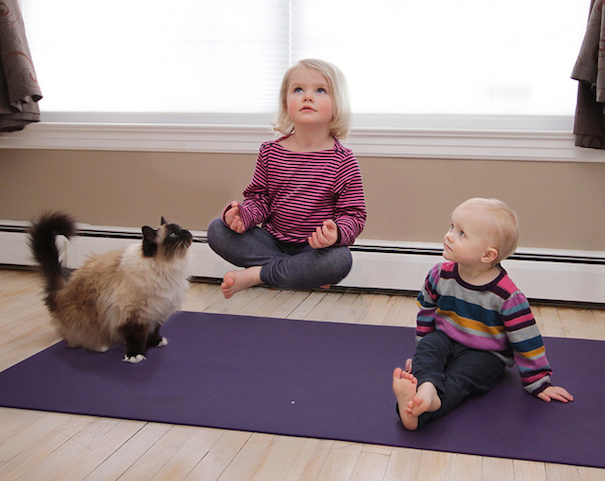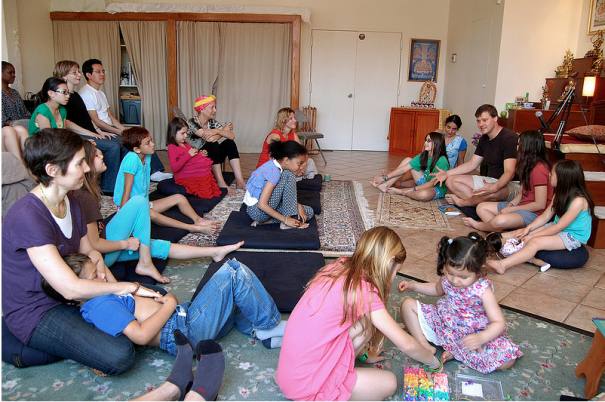Does the new year have you looking for ways to bring a greater sense of calm to your family’s hectic life? Hoping to manage meltdowns and general stress? Then you’ve likely come across the practice of mindfulness—moment to moment awareness of one’s experience. Guess what? It helps kids manage stress, too, and more and more places around the city are helping little ones get centered. Read on for a quick primer, and where mindfulness for kids is happening in NYC.
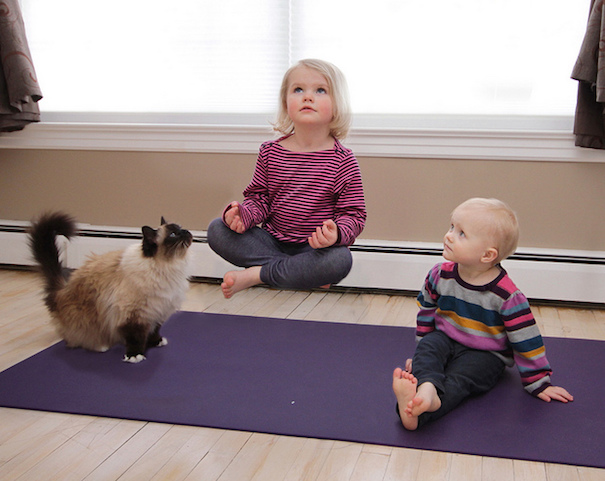
photo: Mike Tidd via Flickr
An Intro to Mindfulness
But first, a basic mindfulness primer. We asked Carla Naumburg, PhD, and author of the book, Ready, Set, Breathe: Practicing Mindfulness With Your Children for Fewer Meltdowns and a More Peaceful Family, to explain what exactly you’d be getting into, and what it could do for your children – and you.
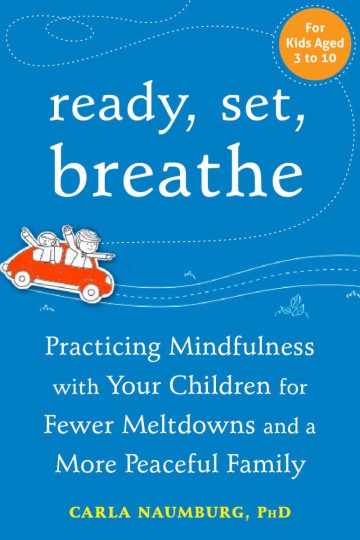
Red Tricycle: What is mindfulness?
Carla Naumburg: The formal definition that I like is “Paying attention to the present moment with kindness and curiosity so we can choose our next behavior.”
RT: How is mindfulness different from basic meditation or yoga, of which there are plenty of classes for kids in NYC?
CN: Mindfulness is a perspective, a particular way of paying attention to one’s experience. Meditation is a way of formally practicing mindfulness. You can be mindful of whatever you are doing over the course of the day, by making a choice to pay attention to the book you are reading to your kids, or the noodles you are cooking, or whatever. However, meditation is about spending a period of time intentionally focusing your attention on something (often, your breath, but you can also do walking meditation, listening meditation, etc…) as a way of strengthening the mindfulness muscle in our minds, if you will.
RT: So many programs mention Buddhism. Is mindfulness a religion?
CN: The current mindfulness movement in the United States does have roots in the Buddhist tradition. However, mindfulness itself is not religious at all; it is just about one’s internal experience. Virtually every religious tradition has a history of contemplative practice, and if parents are interested in integrating their own religious or spiritual background into their mindfulness practice, that’s great. If they prefer a completely secular approach, that’s great too.
RT: Is mindfulness for kids different than for adults? Should parents approach it differently for children than they might for themselves?
CN: The core concepts are the same. While adults may respond well to more formal training in mindfulness, it may make more sense to teach mindfulness to children in a variety of different ways, including:
• Reading them picture books about mindfulness so you have a shared language and story to refer to
• Playing games and doing crafts that support a mindful experience (Jenga, puzzles, beading, etc. – as opposed to electronic games)
• Practicing mindfulness outside – there are fewer distractions in the outdoors! (Noticing walks, mindful listening, etc.)
RT: What are the benefits of mindfulness specifically for children? What are the benefits for parents?
CN: Mindfulness strengthens our pre-frontal cortex, which is the part of our brain responsible for executive functioning – our abilities to plan ahead, pay attention, think flexibly, respond thoughtfully, manage difficult emotions, etc. You can imagine all the ways in which this might be helpful for both parents and children in terms of managing stressful situations, sustaining attention in boring or challenging situations, and dealing with big emotions in skillful ways. Research has found that mindfulness practice can improve sleep, decrease anxiety and depression, and increase social and academic functioning in kids (and adults), among other benefits.
RT: Does the practice need to be formal or can it be DIY by the family? Is there a specific routine/time to follow?
CN: Some families prefer formal routines, and others will do better with a DIY/organic approach. My book has over 100 different activities, games, and practices, and parents can use any of the practices, modify them, or create their own based on their own cultural or religious background, family size and structure, and personal style and preference.
RT: Can you offer some specific tips for parents in teaching it to their children?
CN: Teaching your kids to notice their breathing is a great way to start – mindful breathing is an easy and effective way to come back into the present moment, no matter what else is going on. For the youngest children (babies and toddlers), you can start by just paying attention to your own breathing when you’re with your kids. Once they get to preschool age, you can have them pretend to hold a flower in one hand and a bubble wand in the other. They can breathe in the smell of the flower and breathe out to blow a bubble. You can also have them lay down and put a “breathing buddy” (a small stuffed animal) on their tummies and they can rock it to sleep with their breath. Never, ever force mindfulness on your kids. It should never be a punishment. But, the most important place for parents to start is with their own practice. It is simply not possible to teach mindfulness to another person if you’re not practicing it yourself.
Where You and the Kids Can Give Mindfulness a Whirl
So, if you’re interested in introducing the idea of mindfulness to a child but don’t have a clue about it yourself, there are places in NYC where your child – and you – can both learn and benefit.
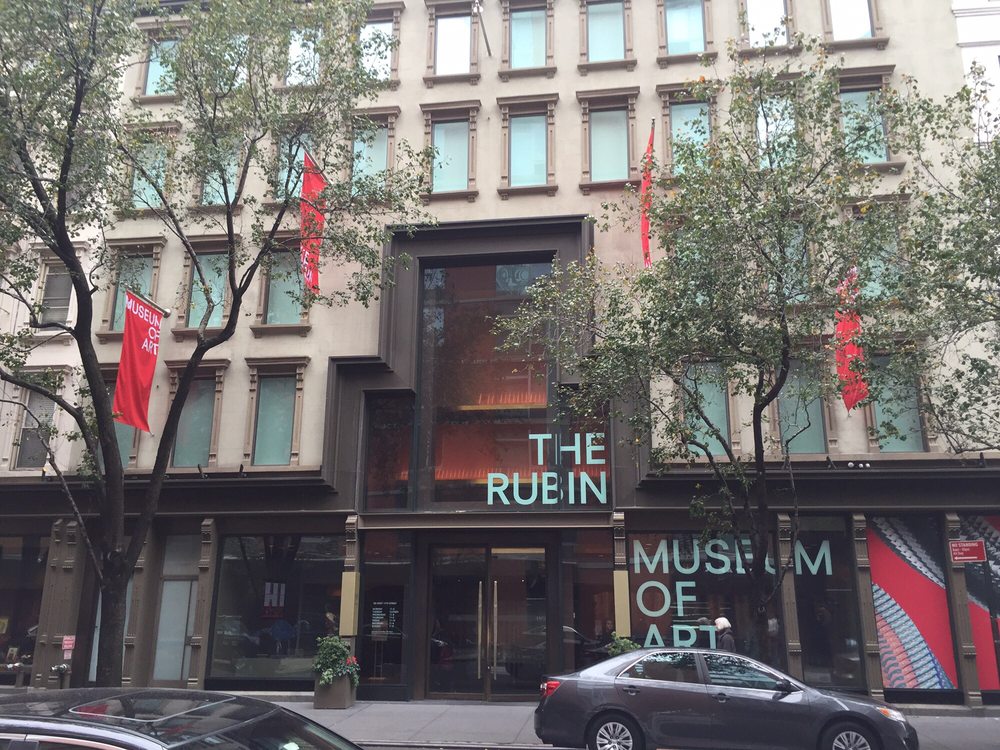
photo: Scott A. via Yelp
Mindfulness for Families
Chelsea’s Rubin Museum of Art is hosting a Mindfulness for Families: Tools for Building a Stress-Free Family series on select Sundays, with sessions focusing on how mindfulness can be applied to different aspects of family life. Upcoming workshops include “Parenting Patterns and Reconstructive Memory – Making Way for Mindful Discipline” (March 11) and “Compassion and Limits – Creating Structure for Mindful Family Growth”(May 13). Admission for one adult also includes one child.
Tickets: $50
March 11 & May 13; 11 a.m. – 12:30 p.m.
The Rubin Museum of Art
150 W. 17th St.
Chelsea
212-620-5000
Online: rubinmuseum.org
The Well-Rounded Experience: Kadampa Meditation Center
Learn at the same time as your child, but not alongside them. Every Sunday from 11 am to 12:30 pm, kids get their own lesson in mindfulness while parents practice in the main meditation hall. The 90 minutes include Buddhist teachings, guided instruction, a group story, arts & crafts and even a snack! Donations are welcome.
127 W. 24th St.
Chelsea
212-924-6706
Online: meditationinnewyork.org
For the Little Guys: Shambhala Meditation Center of NYC
Shambhala Meditation Center of NYC breaks its meditation groups for kids into Tiger Cubs (ages 3-5) and Lions (ages 6 and up). Offered the first Sunday of every month, these sessions incorporate Shambhala themes as well as Buddhist ones, and stress that all children are goodness, curiosity and kindness personified. But maybe they need a wee bit of help getting there on a regular basis. $20/session.
The Center is also planning an after-school program, “Mindful+ Art, Action, Awareness” with teachers Gala Narezo & Sarah Wayland-Smith. Children ages 8-12 meet to learn mindfulness meditation and awareness techniques and explore art projects based on themes of webs & weavings. Tuesdays, 4 – 5 p.m.
118 W. 22nd St.
Chelsea
212-675-6544
Online: ny.shambhala.org
Family Time: Vajradhara Meditation Center
For parents who’d like to get into the act — or can’t get to Chelsea on a Sunday — this Brooklyn location hosts weekly Family Meditation: Mindfulness for Families and Kids sessions on Sundays from 10 – 11 a.m. Class content is adapted each week to the families in attendance, but generally consists of family meditation, free play, and discussion of Dharma topics appropriate to both middle school kids and parents. (In you are interested in attending, double check the schedule before heading out.)
Tickets: $15
Sundays, 10 – 11 a.m.
444 Atlantic Ave.
Boerum Hill
917-403-5227
Online: brooklynmeditation.org
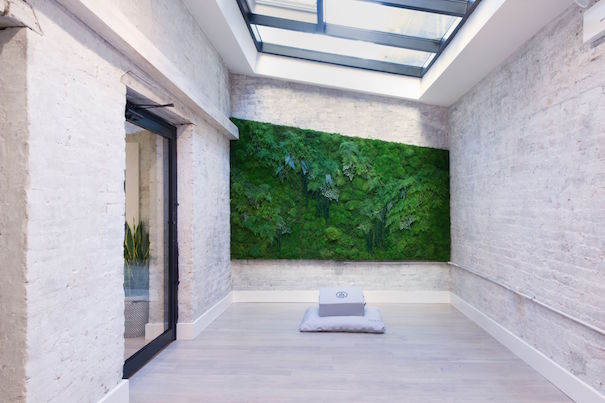
photo: MNDFL
Thoroughly Modern Mindfulness: MNDFL
Since arriving in the city two years ago, modern meditation space MNDFL has expanded to three locations: the original in Greenwich Village, The Upper East Side, and Williamsburg. With a space and website that feel more Soul Cycle than Siddhartha, MNDFL welcomes kids ages eight and over to saddle up alongside adult students on a cushion. Drop-in classes are 30 or 45 minutes in length, and topics/areas of focus range from reducing stress and anxiety, increasing energy, and sleeping better. Classes are $18 and up, with bulk pricing discounts.
10 E. 8th St.
Greenwich Village
212-477-0487
Online: mndflmeditation.com
239 E. 60th St.
Upper East Side
212-477-0601
208 N. 8th St.
718-218-6060
Williamsburg
Master Class: Vipassana Meditation Center
For the experienced young meditator, this program dedicated to the practice of Anapana meditation for children ages 8-12. Full day schedules include guided meditations, stories, discussions, games, art activities and snacks. This program segregates by age and gender, and stresses that children must fully understand what they are embarking on; an application and parental permission is required.
Dhamma House NYC
247 W 38th St. #1003
Midtown West
413-625-2160
Online: dhara.dhamma.org
Namaste! Where do your kids get centered? Tell us in the comments below!
— Alina Adams
